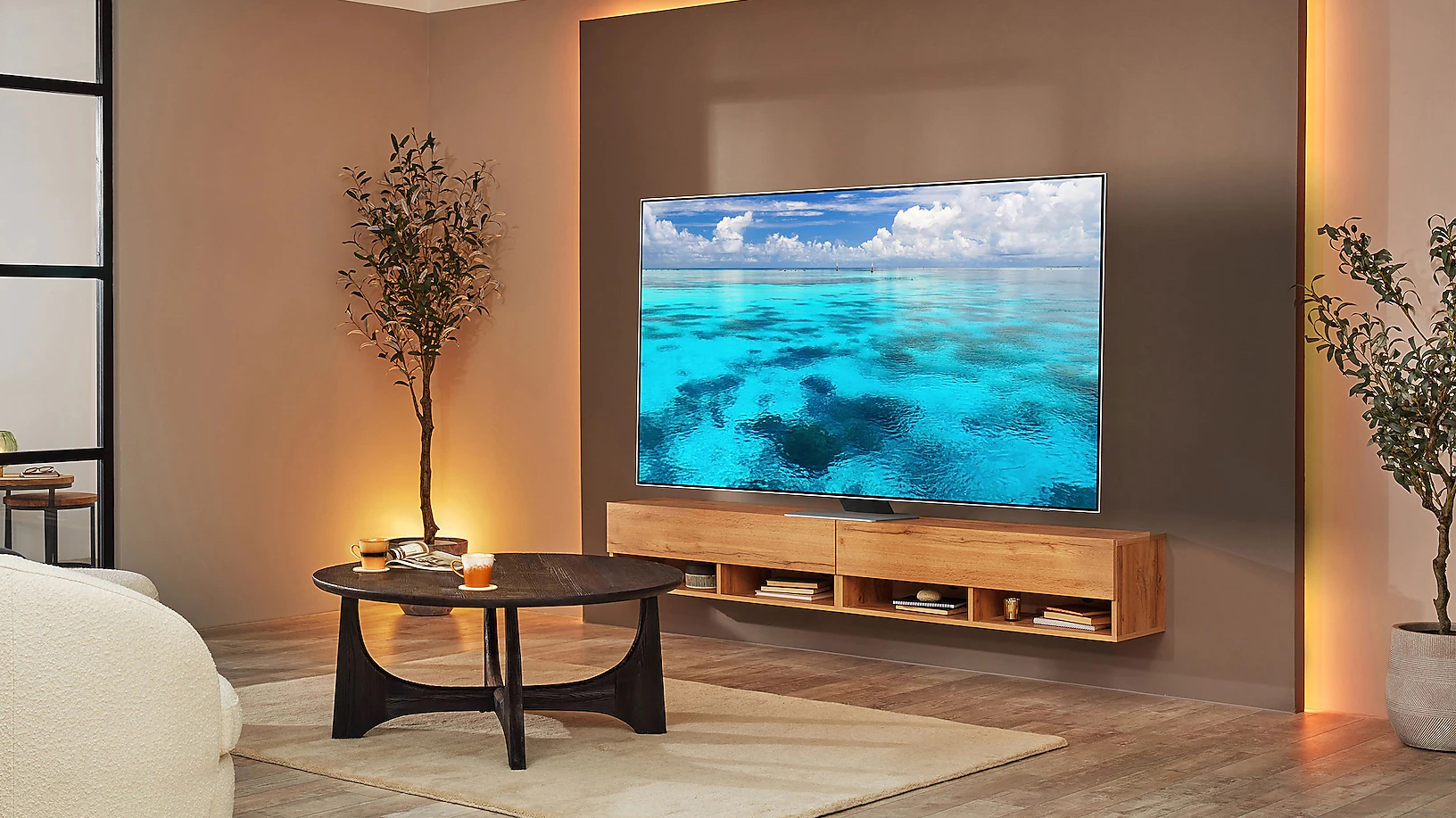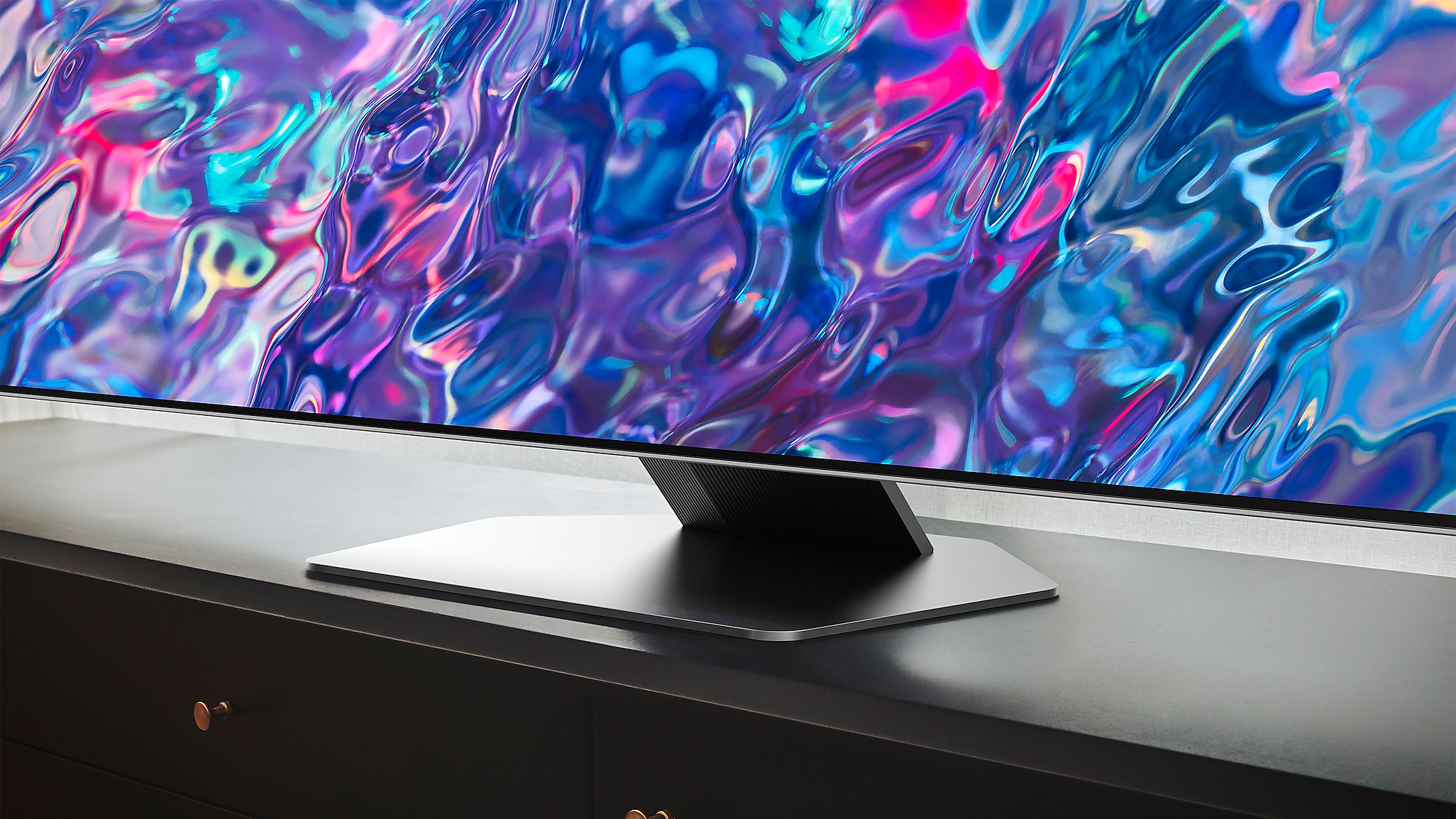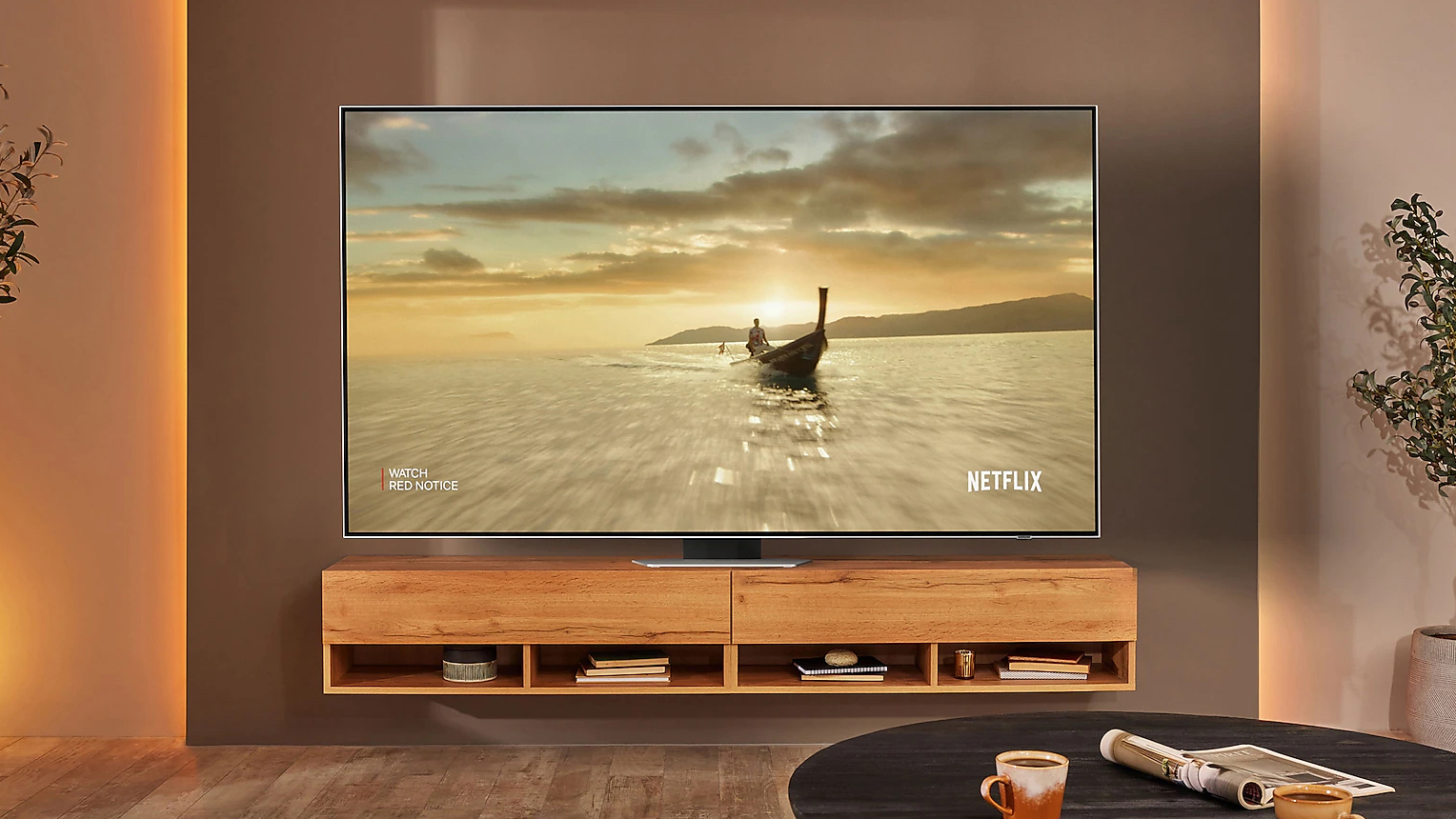I tested Samsung's QN85B Neo QLED 4K TV, and it's not pulling me away from OLED
More affordable mini-LED just can't match the depth of OLED's images

There’s always a gap between ‘in theory’ and ‘in practice’ – everyone understands this. So it’s not damning the technology to point out there’s a gap between the theoretical advantages of mini-LED technology and the way it performs in practice – or, to be specific, there’s a gap between what the Samsung QN85B I’ve been testing promises, and what it delivers.
Update: here's our full Samsung QN85B review.
I wrote a whole guide on what mini-LED is, but for the ‘TL;DR’ among us, let’s have a little overview. Mini-LED uses much smaller LEDs than is usual for the backlighting behind an LCD TV screen. Because they’re much smaller, there can be many more of them and, consequently, many more individual dimming ‘zones’ that can be switched on or off as the on-screen content requires. So, in theory, the overall brightness of the panel can be improved, and the areas where it needs to dim can be more precise.
And in practice, the QN85B makes good on the theory in some ways. Certainly it’s much brighter than the best OLED TVs it’s meant to be usurping – brighter even than LG’s vaunted ‘EX’ panels and the QD-OLED screen used on the Samsung S95B. And there’s no arguing with the relative accuracy or responsiveness of the backlighting when you compare it to a (suddenly antiquated) screen that’s backlit by LEDs of more usual size.

And though it doesn’t achieve the areas of almost spooky slimness that OLED TVs are capable of, Samsung has managed to make the QN85B an extremely svelte and entirely consistent 27mm thick, which means it’s a more realistic proposition for wall-hanging than an OLED alternative that balloons from 6mm at the top to 43mm at the bottom because it’s got to keep its electronic doodads somewhere.
Elsewhere, too, the mini-LED news is good. The breadth of the Samsung’s color palette, for example, its variation and realism and its beautifully judged saturation, ensure images are vibrant-going-on-vivid without ever getting coarse or aggressive.
But somehow, the QN85B stumbles when it’s supposed to be taking flight. Its backlighting turns out to be something of a blunt instrument – at least as far as investing black tones with detail is concerned. There just isn’t the sort of insight into dark scenes that OLED technology is able to muster, and a blank uniformity to black tones where an OLED TV makes all sorts of useful observations about pattern, texture and so on.

And when it comes to white text on a black background (hands up anyone who’s never seen a film where this occurs at some point), even carefully targeted and precisely controlled backlighting can’t prevent some blooming and haloing around the text in a manner that OLED simply doesn’t have.
So ultimately I’m not quite sure. I enjoy how consistently slim a mini-LED TV can be, and I enjoy the brightness of which it’s capable as much as anyone else who doesn't want to have to draw the curtains in order to watch some TV.
But at the moment it doesn’t seem like the technology that’s going to slay the OLED dragon, when it costs the same as OLED TVs that I simply enjoy watching more.
Get daily insight, inspiration and deals in your inbox
Sign up for breaking news, reviews, opinion, top tech deals, and more.
Simon Lucas is a senior editorial professional with deep experience of print/digital publishing and the consumer electronics landscape. Based in Brighton, Simon worked at TechRadar's sister site What HiFi? for a number of years, as both a features editor and a digital editor, before embarking on a career in freelance consultancy, content creation, and journalism for some of the biggest brands and publications in the world.
With enormous expertise in all things home entertainment, Simon reviews everything from turntables to soundbars for TechRadar, and also likes to dip his toes into longform features and buying guides. His bylines include GQ, The Guardian, Hi-Fi+, Metro, The Observer, Pocket Lint, Shortlist, Stuff T3, Tom's Guide, Trusted Reviews, and more.
